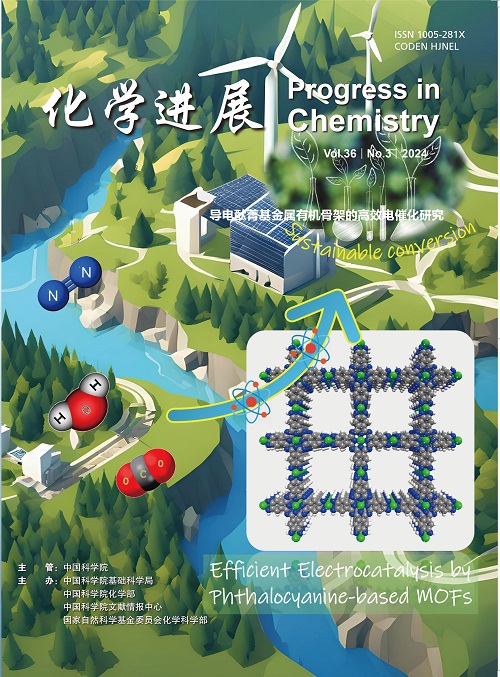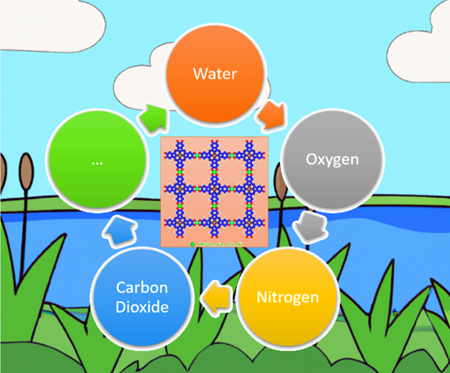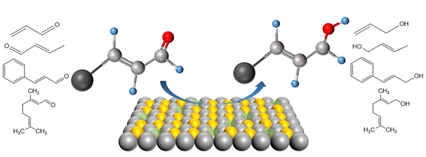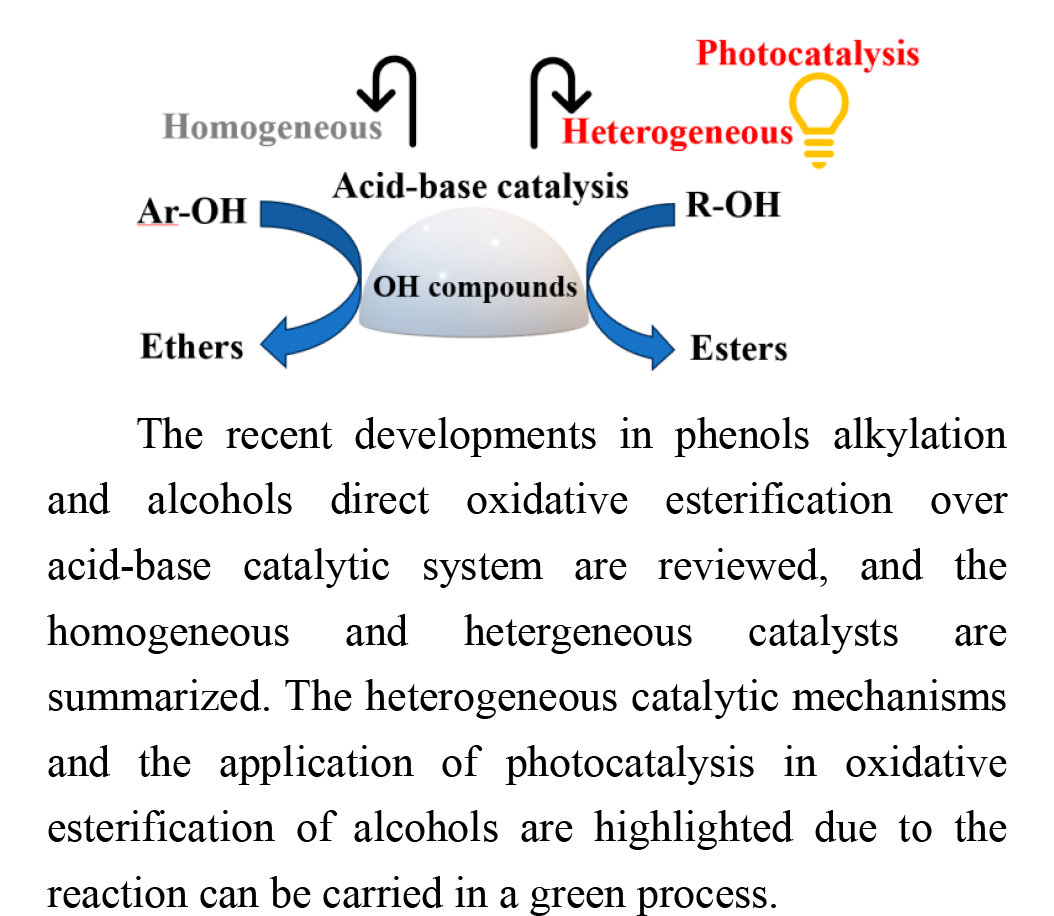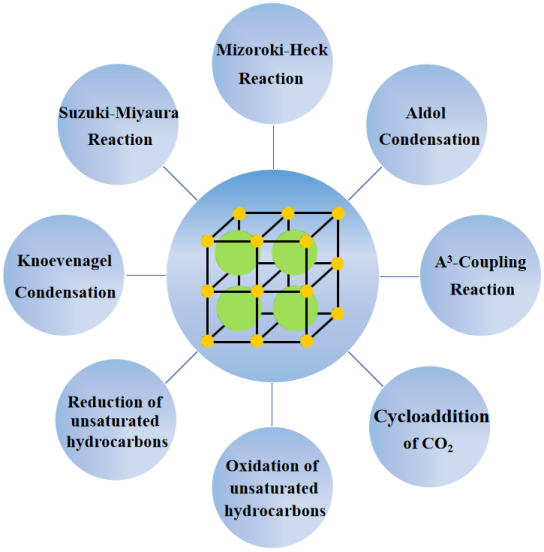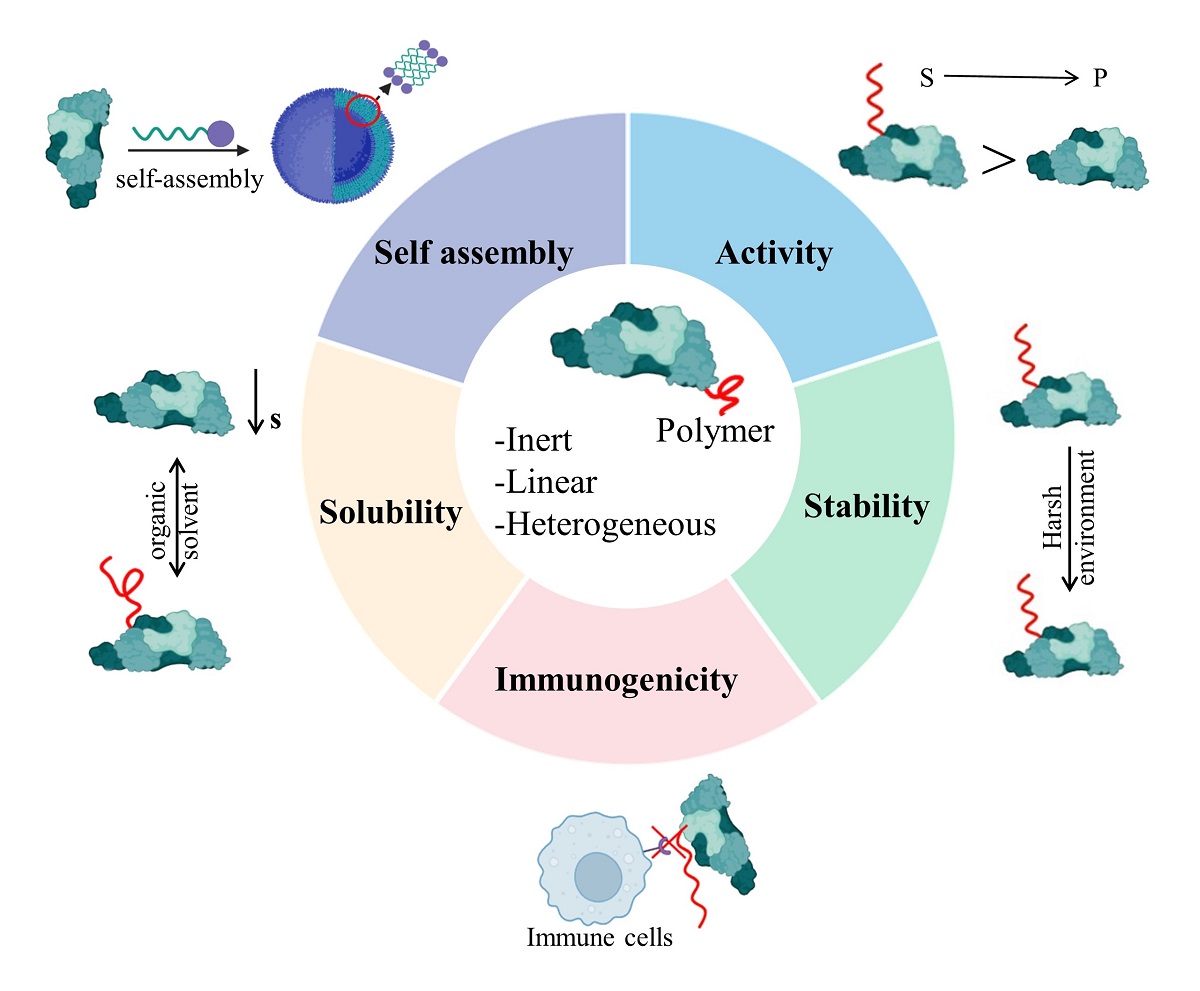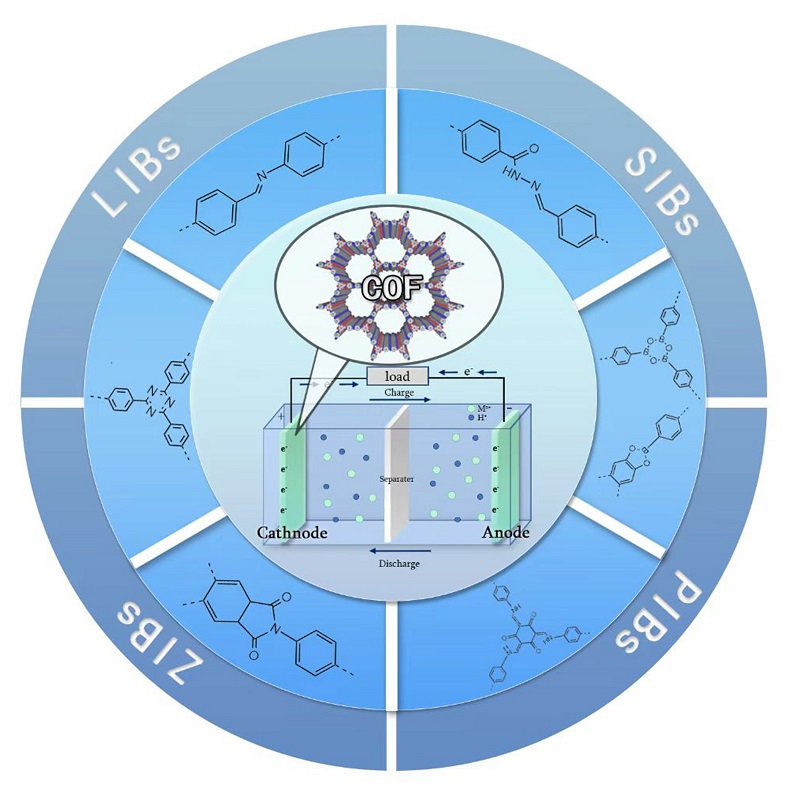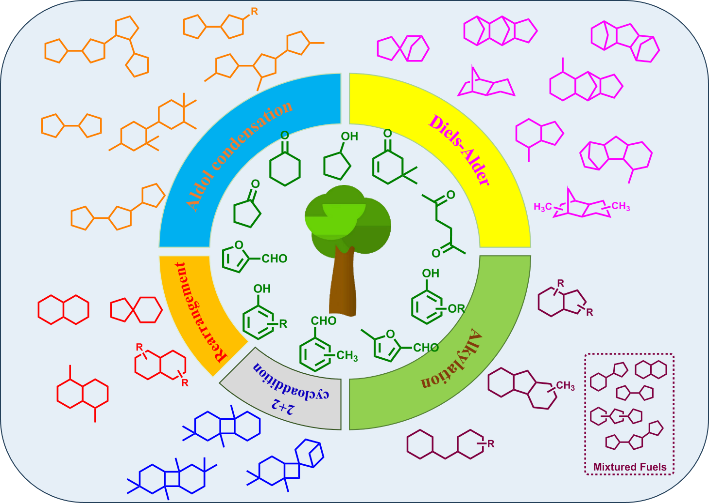Shun Lu, Yuan Liu, Hong Liu. Conductive Phthalocyanine-Based Metal-Organic Frameworks for Efficient Electrocatalysis[J]. Progress in Chemistry, 2024, 36(3): 285-296.
The development of innovative catalysts for various electrochemical scenarios is crucial in satisfying the growing demands for sustainable energy and environmental conservation. Conductive metal-organic frameworks (c-MOFs) based on phthalocyanine complexes known as phthalocyanine-based c-MOFs, have shown promising potential in electrochemical energy conversion and environmental research. These c-MOFs represent a new category of layer-stacked porous MOFs with in-plane extended π-conjugation structure, which can enhance electrocatalytic activity by facilitating the mass diffusion of reactants and electron/charge transfer. The exceptional promising for a variety electrocatalytic reactions, such as water, oxygen, CO2, and nitrogen conversion. In this work, we focus primarily on phthalocyanine-based c-MOFs rather than other types of c-MOFs, providing a comprehensive overview of their conductive mechanisms and main electrocatalytic reactions. We also cover recent progress in the utilization of phthalocyanine-based c-MOFs as heterogeneous catalysts in electrocatalysis. Furthermore, we explore the challenges related to the utilization of phthalocyanine-based c-MOFs in electrocatalysis. The state-of-the-art research and insights into the future perspectives of phthalocyanine-based c-MOFs as electrocatalysts are also presented and discussed. This work aim to guide the development of phthalocyanine-based c-MOF electrocatalysts with enhanced activity.
1 Introduction
2 Conductive mechanisms
3 Electrocatalysis
3.1 Water electrolysis
3.2 Oxygen reduction reaction
3.3 Carbon dioxide reduction reaction
3.4 Nitrogen reduction reaction
4 Challenges and outlook
4.1 Catalytic activity
4.2 Conductivity
4.3 Selectivity
4.4 Stability
4.5 Other possible reactions
5 Summary





